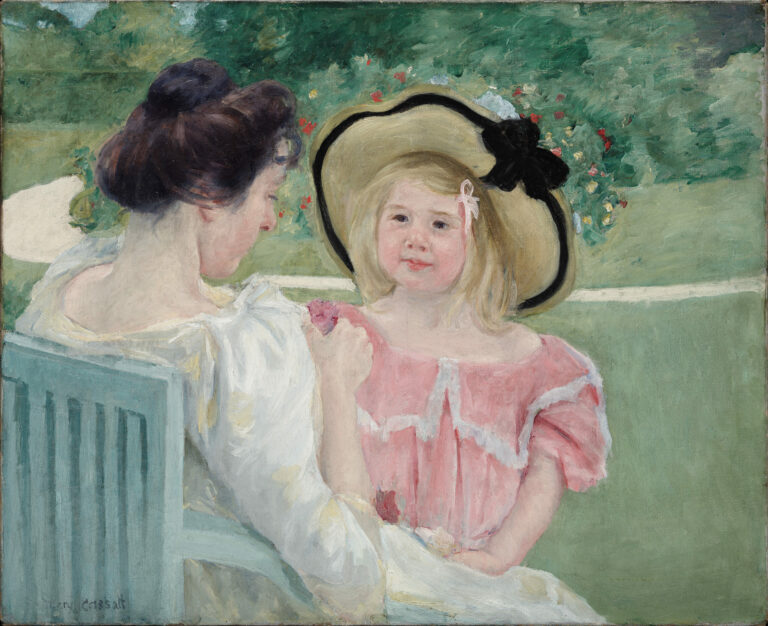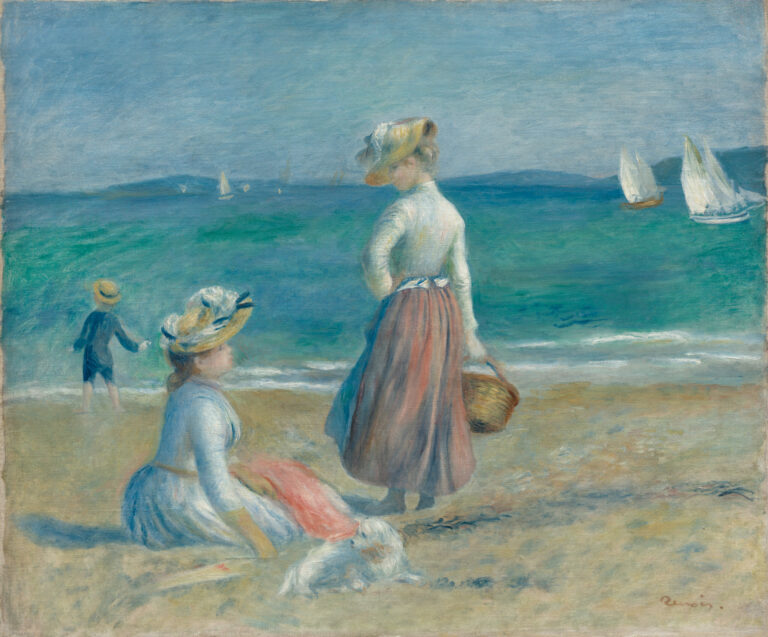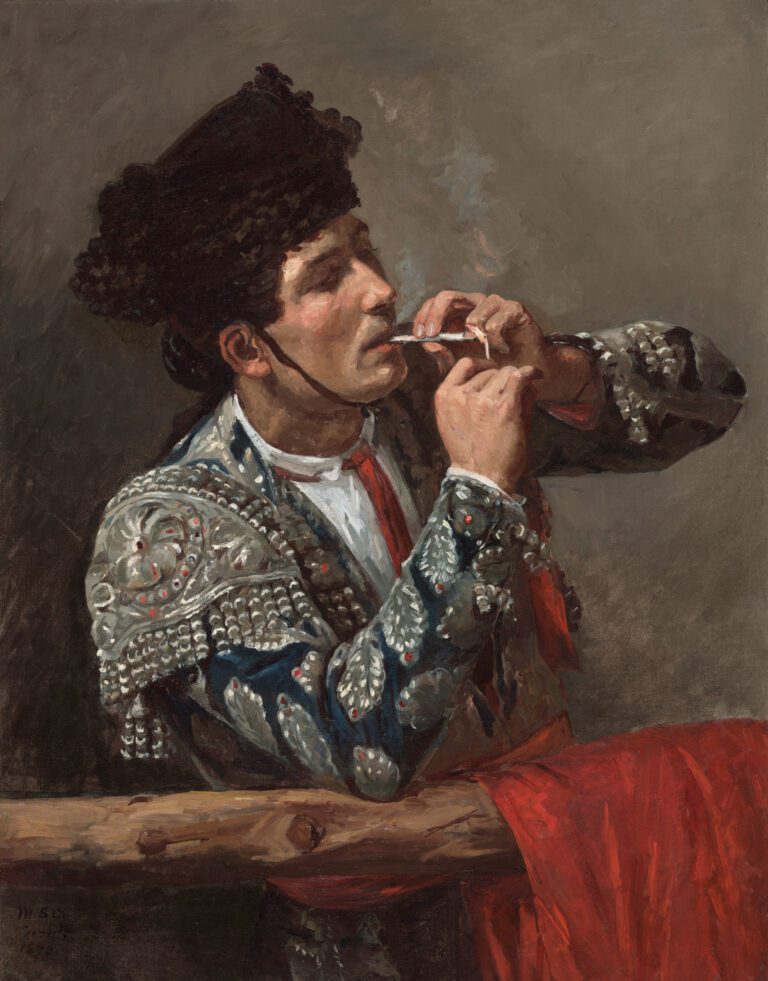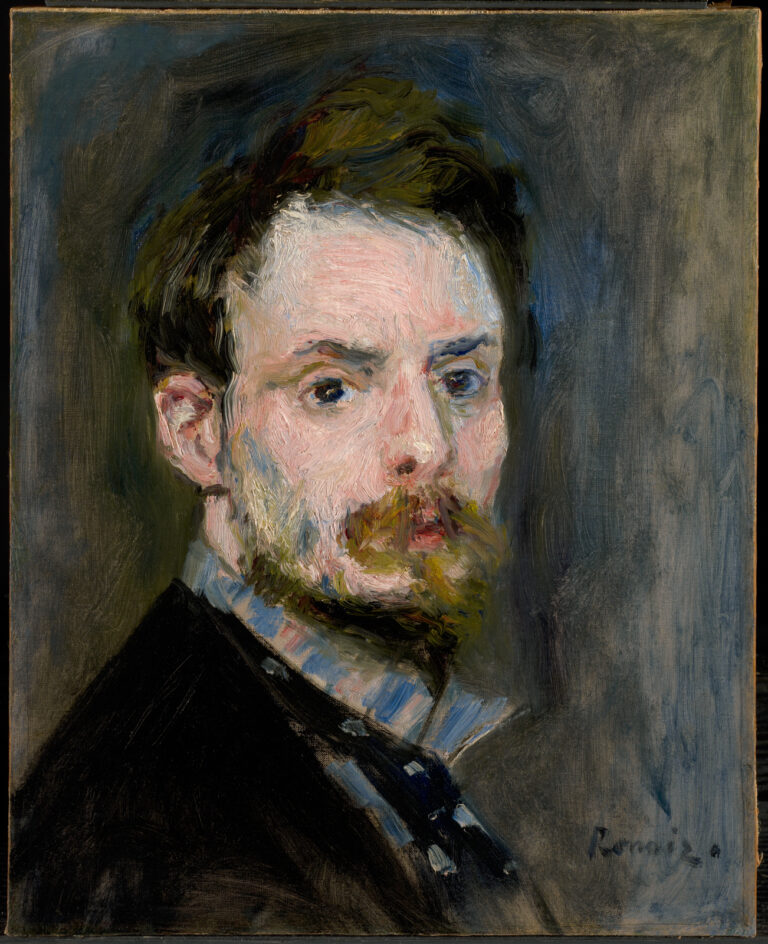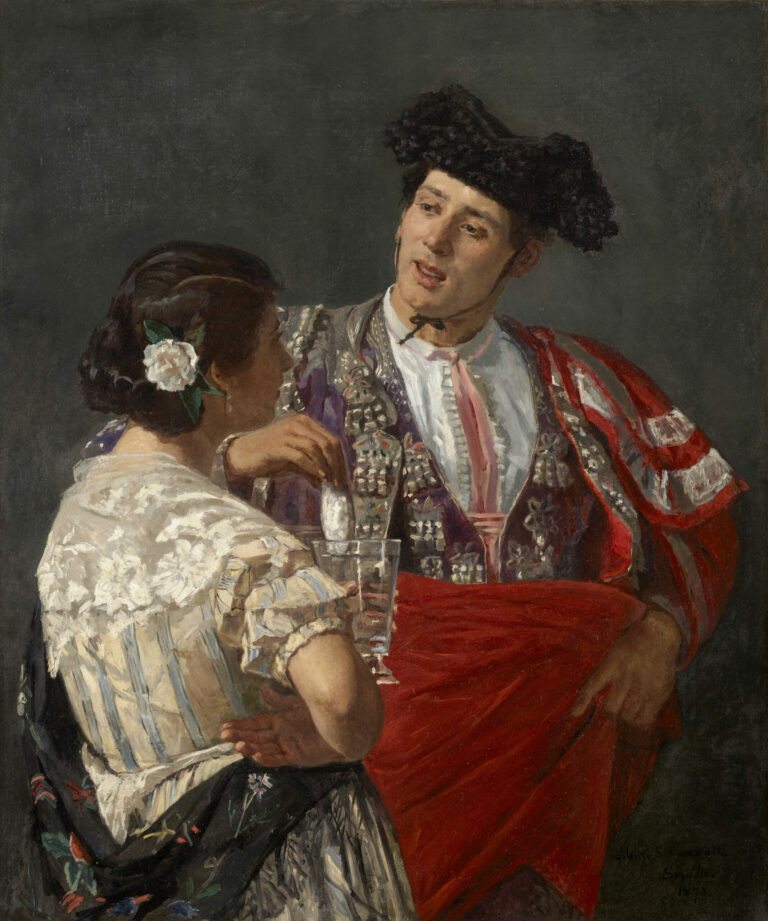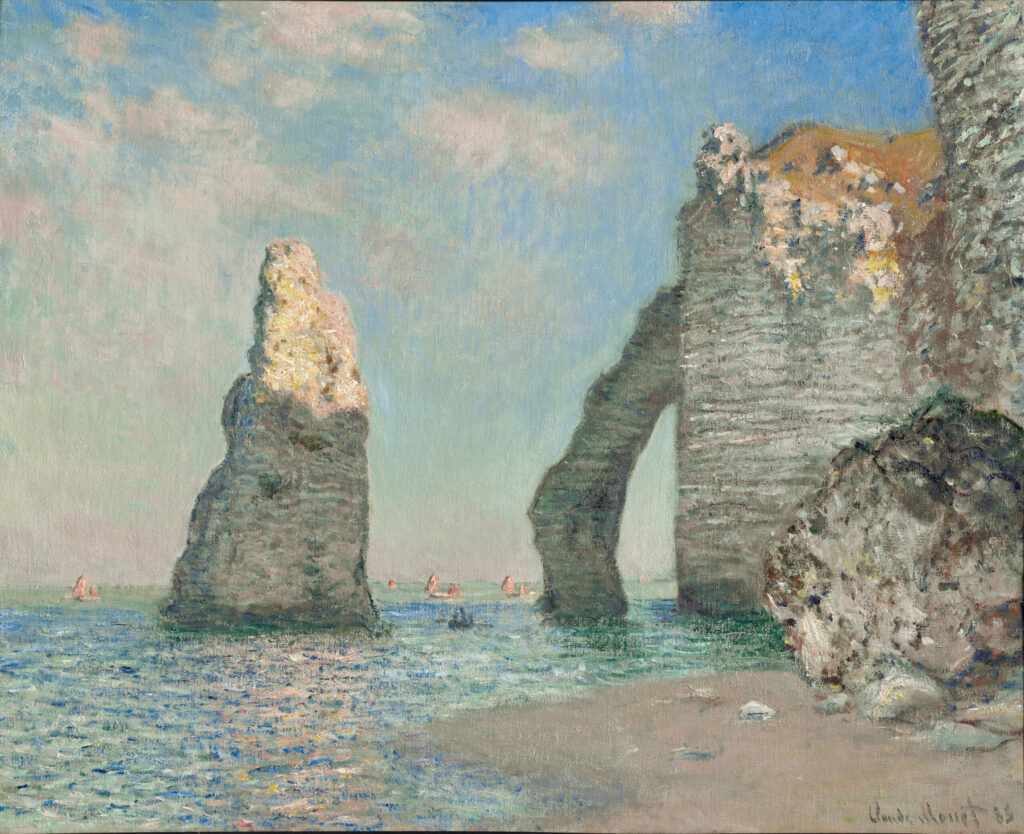
The Cliffs at Étretat: A Chromatic Poem Between Sky and Sea. In this painting, Monet transfigures the famous cliffs of Étretat into a visual symphony where light becomes the true protagonist.
The eye is first captured by the majestic Porte d’Aval, a limestone arch sculpted by millennia, standing as a mineral sentinel between sky and sea. Beside it, the Needle rises toward the firmament. The artist, having braved the elements from a bold and perilous vantage point, offers us a striking perspective that magnifies the site’s monumentality.
🎨 His mastery of palette is breathtaking: the blues of the sea dialogue with the opalescent tones of the sky, while the ochres and whites of the cliffs vibrate under the changing caresses of Norman light. Monet does not paint the cliff—he captures the fleeting instant when nature reveals itself in its ephemeral splendor.
Essential Information
- The Cliffs of Étretat by Claude Monet, 1885
- Oil on canvas, 25 5/8 × 32 in. (65.1 × 81.3 cm)
- The Clark Art Institute, Williamstown
- https://www.clarkart.edu/ArtPiece/Detail/The-Cliffs-at-Etretat
Claude Monet (1840-1926) embodied the very soul of Impressionism, a movement he founded and tirelessly explored. Born in Paris but deeply attached to the Normandy of his childhood, he devoted his entire life to capturing the luminous vibrations of the visible world. Revolutionizing landscape painting, he favored plein air work, confronting meteorological whims to directly capture atmospheric variations.
His obsessive quest for light led him to paint in series, relentlessly exploring the same motif under different conditions. From the Haystacks to the Water Lilies of Giverny, through the Rouen Cathedral series and the London Parliament paintings, Monet pursued until his final days a pictorial research that brought him to the borders of abstraction, thus paving the way for 20th-century modern art and inspiring entire generations of artists.

